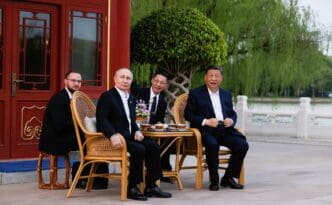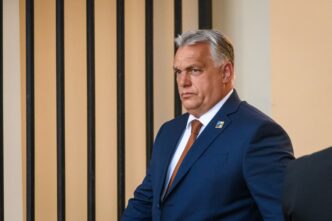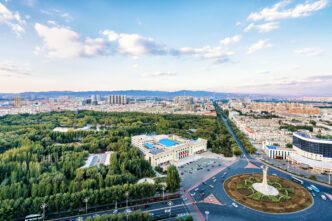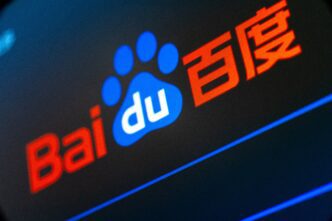Executive Summary
- Chinese President Xi Jinping hosted a major military parade and summit, showcasing advanced weaponry and thousands of troops as a direct challenge to the Western-led global order.
- The event notably gathered leaders from China, Russia, North Korea, and Iran, marking the first time these “axis of upheaval” nations’ leaders were together, signaling an emerging anti-American front.
- President Xi is leveraging perceived shifts in American foreign policy, including under President Trump, to assert China’s vision for redefining global rules and establishing a new international order.
The Story So Far
- China is asserting its growing power and aiming to challenge the Western-led global order, leveraging what it perceives as an opportune moment due to shifts in American foreign policy under President Donald Trump, including the shaking up of alliances and the imposition of economic pain through global trade wars. This event also underscores the emergence of an “axis of upheaval,” as leaders from China, Russia, North Korea, and Iran converge, signaling a unified front against Western influence.
Why This Matters
- China’s military parade and summit, hosting leaders from Russia, North Korea, and Iran, underscore a deliberate effort by President Xi to challenge the Western-led global order and establish China as a powerful alternative, leveraging perceived shifts in American foreign policy to foster an emerging anti-Western alignment and redefine international rules.
Who Thinks What?
- President Xi Jinping and China aim to showcase the nation’s growing military power, challenge the Western-led global order, and position China as a stable alternative leader capable of resetting international rules.
- Western leaders and strategists view the gathering of China, Russia, North Korea, and Iran as the emergence of an “axis of upheaval” or “anti-American axis,” signaling a direct challenge to Western influence and efforts to pressure countries like Russia.
Chinese President Xi Jinping is hosting a major military parade in Beijing, showcasing advanced weaponry and thousands of troops, following a three-day summit with leaders from across Asia and the Middle East. The event, featuring Russian President Vladimir Putin, North Korean leader Kim Jong Un, and Iranian President Masoud Pezeshkian among other dignitaries, is widely seen as a deliberate display of China’s growing power and a direct challenge to the Western-led global order.
Military Might and Global Ambition
On Wednesday, President Xi is set to commandeer Beijing’s main artery, the Avenue of Eternal Peace, for an ostentatious show of military might. The parade will feature the country’s cutting-edge hypersonic weapons, nuclear-capable missiles, and undersea drones, alongside thousands of goose-stepping soldiers.
This multi-day exercise of soft and hard power aims to send a clear message: China is a force that seeks to reset global rules and is not afraid to challenge those established by the West.
An “Axis of Upheaval” Emerges
The guest list for the gathering, comprising more than two dozen China-friendly world leaders, highlights this message. It includes Russian President Vladimir Putin, North Korean leader Kim Jong Un, and Iranian President Masoud Pezeshkian.
This marks the first time that the leaders of these four nations, which Washington strategists warn are converging to form an anti-American “axis of upheaval,” will be together at a single event.
For Western leaders attempting to increase pressure on President Putin to end the war in Ukraine, the optics of this gathering will appear stark. Iran, North Korea, China, and Russia are seen by some Western observers as an emerging anti-American axis, with Tehran and Pyongyang supplying weapons and, in North Korea’s case, troops to Moscow, while China supports Russia’s war-torn economy and industry.
By seating these leaders by his side, President Xi signals his capacity to influence President Putin and demonstrates that he may not adhere to Western rules in doing so.
Leveraging Shifts in US Foreign Policy
The timing and symbolism of these events are purposeful for President Xi, China’s longest-serving and most powerful leader in decades. Amidst perceived shifts in American foreign policy under President Donald Trump, including the shaking up of alliances and the imposition of economic pain through global trade wars, Xi sees an opportune moment to assert China’s challenge to a world based on Western rules.
Glimpses of the leaders’ activities have shown a powerful camaraderie, with Indian Prime Minister Narendra Modi and President Putin animatedly greeting President Xi. Such moments are seen as powerful outcomes, signaling a convergence of leaders without Western participation.
China’s Vision for a New Order
Throughout his recent pageantry and diplomacy, President Xi has appeared aware of the opening presented by changes in American foreign policy. At the Shanghai Cooperation Organization (SCO) meetings, President Xi emphasized a world in flux and chaos, positioning China as the responsible and stable power to guide its future.
“We must oppose the cold war mentality, block confrontation and bullying practices,” President Xi declared, using language often employed by China to describe what it views as US behavior. He also pledged hundreds of millions in grants to SCO member states and launched a push to reform the international system.
Beijing believes this message resonates differently now, given the US’s actions such as cutting foreign aid, imposing tariffs on developing countries, and raising questions among allies about its commitment. As China’s leader stated, “The house rules of a few countries should not be imposed upon others.”
Regional Realignments
President Xi has already seen benefits from these perceived American policy shifts. Indian Prime Minister Narendra Modi, long courted by the US as an Asian counterweight to China, was observed engaging warmly with President Xi and President Putin.
This comes after India faced up to 50% tariffs on its exports to the US, partly as a penalty for its purchases of Russian oil, which the US views as funding President Putin’s war.
Observers suggest that even countries in Southeast Asia, which have long viewed China’s growing military power and assertiveness in the South China Sea and over Taiwan with wariness, may be influenced by these shifting global dynamics. According to Chong Ja Ian, an associate professor at the National University of Singapore, “the time is now” to woo leaders who have historically tried to hedge between the US and China.
Challenging Western Criticism
While pitching his leadership, President Xi is also using this week’s events to push back on Western criticism of China’s longstanding ties with partners like North Korea, Russia, and Iran, all of whom are often viewed as rogue actors by the West.
Warnings have emerged in Washington of an “axis of upheaval” or “axis of growing malign partnerships” coordinating between these nations. Brian Hart, a fellow of the China Power Project at the Center for Strategic and International Studies (CSIS), noted that the military parade marks the first time the leaders of China, Russia, North Korea, and Iran are all present in the same place, highlighting a “distinctive moment” given the previous lack of quadrilateral engagements.
China has been careful not to explicitly endorse these countries’ aggressions, for instance, by reportedly sending large quantities of dual-use goods but not lethal weapons to Russia. However, by gathering these players, President Xi aims to signal that he can set the rules for who “should be deemed acceptable by the international community, regardless of what the democratic West or the US may think,” according to Steve Tsang, director of the SOAS China Institute at the University of London.
Nonetheless, the optics may appear less stark given President Trump’s past interactions, including a friendly summit with President Putin where he stated he had “always had a fantastic relationship” with the leader, and discussions about meeting again with Kim Jong Un, whom President Trump has often praised.
Redefining the Post-War Order
The military parade also commemorates the 80th anniversary of Japan’s surrender in World War II and China’s role in fighting the imperial power. President Xi, like President Putin, has drawn from this history to reshape a narrative positioning China and Russia (as the Soviet Union) as guardians of a “post-war” international order, distinct from the current US-dominant one.
In their view, the cause of current global crises, including the war in Ukraine or North Korea’s nuclear ambitions, stems not from their own aggressions but from the US and its allies ignoring their “legitimate security concerns.” Their broader rhetoric blames the US and the alliances and value systems it formed post-World War II for global crises, confrontation, and disparity today.
Tong Zhao, a senior fellow at the Carnegie Endowment of International Peace, stated that President Xi is “unapologetically defending a post–World War II order that he sees as under assault by Western powers determined to block China’s rise.” As he surveys the global landscape, President Xi is “pressing ahead with a campaign to delegitimize US leadership, weaken Western solidarity, and elevate China as a credible alternative.”
The summit and military parade underscore China’s assertive stance on the global stage, with President Xi leveraging perceived shifts in American foreign policy to champion a new international order. By bringing together leaders from nations often at odds with the West, Beijing aims to solidify its position as a powerful alternative and a key player in redefining global rules and alliances.








